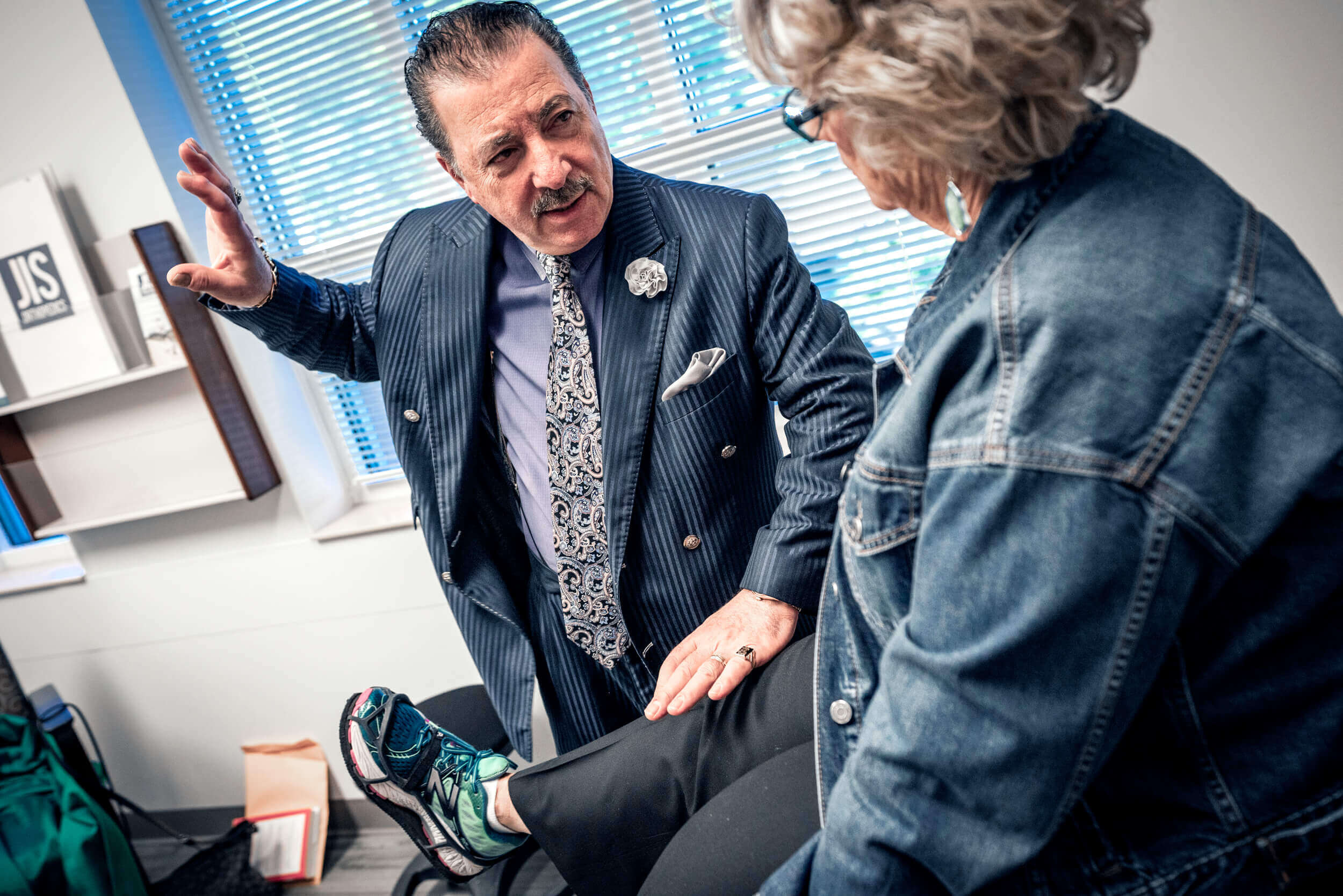
The future is undoubtedly bright for ASCs as increasingly complex procedures move from inpatient hospitals to outpatient facilities that thrive on cost-effective and highly efficient surgical care.
Grand View Research reported that the $10.1 billion U.S. orthopedic ASC market is expected to reach $15 billion by 2030 and predicted that more than half of all joint replacements will be performed in ASCs by that time. More than two-thirds of all orthopedic cases are expected to be performed in ASCs by 2025, according to Research and Markets.
Opportunity clearly abounds for orthopedic companies to tap into this accelerating — and unique — market. OEMs that develop personalized instrumentation and implants, procedure kits and cost-effective technology will be positioned for success.
Adolph V. Lombardi Jr., M.D., a total hip and knee replacement specialist and President of JIS Orthopedics in Columbus, Ohio, owns and operates White Fence Surgical Suites, an orthopedic ASC that opened in 2013. Dr. Lombardi has replaced more than 35,000 hips and knees over his 36-year (and counting) career. A year ago, his ASC surpassed 15,000 joint replacements performed.
Dr. Lombardi recently discussed ways in which orthopedic companies can meet the needs of the ASC customer through the development of affordable solutions that advance minimally invasive surgical care. He was joined by Diane Doucette, R.N., President and Chief Operating Officer at Mount Carmel New Albany and Mount Carmel St. Ann’s specialty hospitals in Ohio.
The pair go way back and have witnessed firsthand the evolution of outpatient orthopedic care. Their experience and knowledge provide valuable insights into what makes ASCs tick. Here’s what they had to say.
Clear Communication. Surgery centers don’t necessarily have the resources or storage capacity to have multiple device options readily available for individual cases. “To deliver effective outpatient care, I need to maintain a close connection with industry and receive strong support from orthopedic companies,” Dr. Lombardi said.
For instance, if Dr. Lombardi needs to place a tibial component around existing hardware in the knee, he might need a revision-style component. This information needs to be relayed to his implant vendor so they can ensure he has the necessary supplies on hand.
Dr. Lombardi said company reps should cultivate productive working relationships with surgeon customers to understand their needs and the specific implants and supplies they require to perform each case. “Given the ongoing supply chain challenges, it’s crucial to anticipate potential shortages for a particular item and be prepared to switch to an alternative, if necessary,” he added. “This nimbleness requires a high level of nearly daily communication.”
Improved Instrument Management. ASCs work as lean as possible in terms of the number of items opened in the surgical field and the number of trays that need reprocessing.
The surgeons at White Fence Surgical Suites took proactive steps to optimize the setup of their instrument sets. They worked together to examine each of the center’s trays to determine which instruments were essential for performing the cases at the facility. This exercise allowed them to identify items that could be eliminated, which lessened the burdens of instrument handling and reprocessing.
“We subsequently noticed it took us less time to set up and break down operating rooms between cases, which contributed to more efficient care,” Dr. Lombardi said. Orthopedic companies can help on the front end by working to limit the number of instruments that are required to perform complex procedures.
Doucette pointed out that the upheaval caused by the COVID-19 pandemic has left the healthcare industry grappling with workforce shortages. Staffing shortages are particularly troublesome for ASCs, which don’t have extensive worker pools and strive to limit personnel expenses. She said labor costs have recently increased by as much as 30%, necessitating ASCs to find value in the margins to remain profitable.
Orthopedic companies must grasp this challenging circumstance and design products that reduce the manpower necessary to perform surgery, according to Doucette. NextStep Arthropedix’s recent introduction of The Preserve fits the bill. It’s the first retractorless approach for anterior hip replacement that requires one less surgical team member to deploy.
“Whenever a solution offers an opportunity to replace or reduce the need for human capital, it immediately becomes an intriguing prospect,” Doucette said.
Interest is also growing in the use of single-use instruments and supplies to improve surgical workflows, reduce cross-contamination risks and lessen the burden on sterile processing. For example, Xenco Medical’s new Multilevel Cervikit is a sterile-packaged disposable instrument system for anterior cervical discectomy and fusion procedures. The device is specifically designed to streamline surgical care in ASCs by eliminating the need to reprocess instruments between cases.
Orthopedic companies must often double up on the instrumentation that supports surgeons who operate at multiple hospitals and ASCs. It’s difficult to manage and track multiple trays that rotate through several facilities, so some OEMs and suppliers are investing in offsite facilities that serve as instrument reprocessing hubs for a community’s ASCs and hospitals.
“The outsourcing of instrument care presents an excellent opportunity for industry,” Doucette said. “A system for off-site sterilization would save ASCs time and money and eliminate or reduce the need for in-house reprocessing. This innovation could be a significant driver for a new standard of efficiency in the ambulatory setting.”
Procedure-Specific Packages. Dr. Lombardi pointed to the benefits of receiving sterile kits from orthopedic companies that contain the supplies, implant components and instrumentation needed to perform surgery.
“This type of bundling reduces labor costs because staff resources are no longer needed to pull individual items for each case,” Doucette added. “It also enhances consistency because surgical teams can count on the accuracy of each kit instead of constantly having to confirm that the necessary items have been pulled before cases begin. These types of kits are incredibly valuable in terms of workflow efficiency.”
Dr. Lombardi anticipates that orthopedic companies will take the bundling concept to another level by offering personalized solutions. “Whichever company optimizes the ‘surgery in a box’ concept first would be ahead of the game,” he said.
Readying for Revisions. Doucette remarked that joint replacement patients now cover a broader spectrum with individuals undergoing knee replacements at younger ages than ever before.
In this context, Doucette said, industry must prepare for an anticipated growth in revision surgeries. “How can research and development efforts support surgeons on this front?” she asked. “This will involve not only the development of improved revision implant components but also enhancing the design and materials of implants to increase their durability.”
Accurate Preoperative Planning. Dr. Lombardi said data-driven care is necessary for ASCs to streamline implant and supply inventories to keep overhead low and maintain margins.
He and his colleagues have developed a decision-making algorithm that helps them determine whether patients are suitable candidates for partial or total knee replacements and the implant components needed to perform the procedures based on factors such as their gender, height, weight and BMI. To help these efforts, he believes the orthopedic industry is progressing toward the development of patient-specific preoperative planning tools that allow surgeons to select appropriately sized implants prior to the procedure.
Several companies offer applications that allow Dr. Lombardi to input his patients’ clinical information, preoperative images and anatomical measurements of the joint they’re having replaced. He can connect the information to his center’s robotic systems, which guide his bone cuts in the O.R. During the recovery phase, patients can be monitored through smart implants that capture and record relevant kinematic information.
“However,” Dr. Lombardi said, “the challenge we currently face is the lack of seamless integration among digital components. Ideally, surgeons would work with a fully integrated system that provides easy access to preoperative and postoperative patient data.”
Before joint replacement surgery, surgeons must choose among various alignment approaches — mechanical, kinematic, inverse kinematic — to achieve optimal balance in the joint and precise placement of the implant. “The challenge lies in harmonizing the high volume of preoperative information and determining how a particular patient should be managed based on the chosen method,” Dr. Lombardi said.
He believes preoperative planning software and surgical navigation are paramount to addressing this challenge, especially for surgeons who operate in ASCs and must ensure they have properly sized implants and instrument sets on hand. The technology also improves surgical workflows and limits inventory burdens, two important factors that impact success in the ASC setting.
Affordable Technology. ASCs are interested in cost-effective tech that streamlines processes and enhances surgical efficiency. Orthopedic companies that offer navigation systems and robotic platforms at affordable price points for ASCs will position themselves as leaders in the market.
Dr. Lombardi acknowledged that some companies are open to establishing creative placement options like implant pull-through agreements to facilitate the adoption of enabling technology in ASCs. He’s also encouraged by the potential emergence of agnostic robotic platforms. Instead of having to purchase multiple robots to match the implant preferences of several surgeons, an ASC could invest in a single platform to satisfy the needs of its docs.
Dr. Lombardi said the new generation of orthopedic surgeons are training with surgical robots and navigation and rely on the technology more heavily than their more experienced counterparts. He believes it’s essential that orthopedic companies find ways to integrate these platforms into ASCs as younger surgeons enter the field and look to bring their cases to facilities outfitted with the latest high-tech tools.
He’s also a big believer in the potential applications of augmented reality (AR) in orthopedics. The technology displays real-time 3D holographic guidance information on the surgical field, allowing surgeons to track the spatial positioning of their instruments.
Dr. Lombardi believes AR is ideally suited for ASCs, where operating room floor space is often at a premium. “AR doesn’t require the significant physical footprint that a robot does, making it more adaptable for the outpatient setting,” Dr. Lombardi said.
The Perfect Proving Ground
ASCs are primed for innovation in orthopedics thanks to a more direct line of access to clinical and business decision-makers. Entrepreneurial surgeon-owners are typically more amenable to trialing new solutions than bean-counting members of a hospital’s value-analysis committee.
“I’ve been implementing emerging technologies in my surgery center for years instead of bringing them to the local hospital,” Dr. Lombardi said. “ASCs offer a smoother path for adopting new products because they often have fewer bureaucratic hurdles to overcome.”
As the outpatient evolution continues and ASCs capture increasing numbers of cases, industry’s role will become pivotal in helping surgeons plan for personalized surgery and ensuring they have what’s needed for a seamless surgical process.
DC
Dan Cook is a Senior Editor at ORTHOWORLD. He develops content focused on important industry trends, top thought leaders and innovative technologies.




